
Owner/Operator Manual
Manuel Du Propriétaire/Utilisateur
Zoom
®
04383000 11/11
Printed in USA
ENGLISH
FRANÇAIS
Models
915157 – Zoom 34
(Serial No. 10000 and up)
915159 – Zoom 42
(Serial No. 10000 and up)
915161 – Zoom 50
(Serial No. 10000 and up)
915169 – Zoom 34 CARB
(Serial No. 10000 and up)
915171 – Zoom 42 CARB
(Serial No. 10000 and up)
Gasoline containing up to 10% ethanol (E10) or up to 10% MTBE (methyl tertiary butyl ether)
is acceptable for use in this machine. The use of any gasoline exceeding 10% ethanol (E10)
or 10% MTBE will void the product warranty.
Il est possible d’utiliser de l’essence contenant jusqu’à 10% d’éthanol (E10) ou 10% de MTBE
(éther méthyl-tertiobutylique) sur cette machine. L’utilisation d’une essence contenant plus de
10% d’éthanol (E10) ou de 10% de MTBE annulent la garantie.

GB - 2
SAFETY. . . . . . . . . . . . . . . . . . . . . . . . . . 4
ASSEMBLY . . . . . . . . . . . . . . . . . . . . . . 12
CONTROLS AND FEATURES . . . . . . . 14
OPERATION . . . . . . . . . . . . . . . . . . . . . 15
MAINTENANCE SCHEDULE . . . . . . . . 20
SERVICE AND ADJUSTMENTS . . . . . 22
STORAGE . . . . . . . . . . . . . . . . . . . . . . . 31
TROUBLESHOOTING . . . . . . . . . . . . . 32
SERVICE PARTS . . . . . . . . . . . . . . . . . 33
ACCESSORIES. . . . . . . . . . . . . . . . . . . 33
SPECIFICATIONS. . . . . . . . . . . . . . . . . 35
WARRANTY . . . . . . . . . . . . . . . . . . . . . 35
NON-ENGLISH MANUALS
Manuals in languages other than
English may be obtained from your
dealer. Visit your dealer or
www.ariens.com for a list of
languages available for your
equipment.
Manuals printed in languages other
than English are also available as a
free download on our website:
http://www.ariens.com
MANUALES EN IDIOMAS
DIFERENTES DEL INGLES
Puede obtener manuales en
idiomas diferentes del inglés en su
distribuidor. Visite a su distribuidor
o vaya a www.ariens.com para
obtener una lista de idiomas
disponibles para su equipo.
También puede imprimir manuales
en idiomas diferentes del inglés
descargándolos gratuitamente de
nuestra página Web:
http://www.ariens.com
MANUELS NON ANGLAIS
Des manuels dans différentes
langues sont disponibles chez
votre revendeur. Rendez-vous
chez votre revendeur ou allez sur
le site www.ariens.com pour
consulter la liste des langues
disponibles pour votre équipement.
Les manuels imprimés dans des
langues différentes de l’anglais
sont également disponibles en
téléchargement gratuit sur notre
site Web:
http://www.ariens.com
THE MANUAL
Before operation of unit, carefully and
completely read your manuals. The contents
will provide you with an understanding of
safety instructions and controls during normal
operation and maintenance.
All reference to left, right, front, or rear are
given from operator seated in operation
position and facing the direction of forward
travel.
ENGINE MANUAL
The engine on this unit is covered by a
separate manual specific to the engine. This
manual is included in the literature package
that shipped with the unit. Refer to this
manual for engine service recommendations.
If the engine manual is not available, contact
the engine manufacturer for a replacement
manual.
MODEL AND SERIAL NUMBERS
When ordering replacement parts or making
service inquiries, know the Model and Serial
numbers of your unit and engine.
Numbers are located on the product
registration form in the unit literature
package. They are printed on a serial number
label, located on the frame of your unit under
the seat (Figure 1).
TABLE OF CONTENTS
INTRODUCTION

GB - 3
• Record Unit Model and Serial
numbers here.
• Record Engine Model and Serial
numbers here.
PRODUCT REGISTRATION
The Ariens dealer must register the product
at the time of purchase. Registering the
product will help the company process
warranty claims or contact you with the latest
service information. All claims meeting
requirements during the limited warranty
period will be honored, whether or not the
product registration card is returned. Keep a
proof of purchase if you do not register your
unit.
Customer Note: If the dealer does not
register your product, please fill out, sign and
return the product registration card to Ariens
or go to www.ariens.com on the Internet.
UNAUTHORIZED REPLACEMENT
PARTS
Use only Ariens replacement parts. The
replacement of any part on this unit with
anything other than an Ariens authorized
replacement part may adversely affect the
performance, durability, and safety of this unit
and may void the warranty. Ariens disclaims
liability for any claims or damages, whether
warranty, property damage, personal injury or
death arising out of the use of unauthorized
replacement parts.
NOTE: A complete Parts manual may be
downloaded from www.ariens.com on the
Internet.
Figure 1
Unit Serial Number Label

GB - 4
DELIVERY
Customer Note: If you have purchased this
product without complete assembly and
instruction by your retailer, it is your
responsibility to:
• Read and understand all assembly
instructions in this manual. If you do
not understand or have difficulty
following the instructions, contact your
nearest Ariens dealer for assistance.
NOTE: To locate your nearest Ariens dealer,
go to www.ariens.com on the Internet.
Before Attempting to Operate Your
Unit:
1. Make sure all assembly has been
properly completed.
2. Understand all Safety Precautions
provided in the manuals.
3. Review control functions and operation
of the unit. Do not operate the unit
unless all controls function as described
in this manual.
4. Review recommended lubrication,
maintenance and adjustments.
5. Review Limited Warranty Policy.
6. Fill out a product registration card and
return the card to the Ariens Company or
go to www.ariens.com.
DISCLAIMER
Ariens reserves the right to discontinue,
change, and improve its products at any time
without notice or obligation to the purchaser.
The descriptions and specifications contained
in this manual were in effect at printing.
Equipment described within this manual may
be optional. Some illustrations may not be
applicable to your unit.
SAFETY ALERTS
The safety alert symbol is used in decals and
with this manual. Understand the safety
message. It contains important information
about personal safety.
WARNING: Improper assembly
or adjustments can cause serious
injury.
SAFETY
WARNING: This cutting machine
is capable of amputating hands
and feet and throwing objects.
Failure to observe the safety
instructions in the manuals and on
decals could result in serious
injury or death.
Slopes are a major factor related
to loss-of-control and tip-over
accidents. Operation on all slopes
requires extra caution.
Tragic accidents can occur if the
operator is not alert to the
presence of children. Never
assume that children will remain
where you last saw them.
Gasoline is extremely flammable
and the vapors are explosive,
handle with care.
Disengage attachment, stop unit
and engine, remove key, engage
parking brake, and allow moving
parts to stop before leaving
operator’s position.
Look for these symbols to
point out important safety
precautions. They mean:
• Attention!
• Personal Safety Is
Involved!
• Become Alert!
• Obey The Message!
WARNING: POTENTIALLY
HAZARDOUS SITUATION! If not
avoided, COULD RESULT in
death or serious injury.
DANGER: IMMINENTLY
HAZARDOUS SITUATION! If not
avoided, WILL RESULT in death
or serious injury.

GB - 5
NOTATIONS
NOTE: General reference information for
proper operation and maintenance practices.
IMPORTANT: Specific procedures or
information required to prevent damage to
unit or attachment.
SAFETY DECALS AND
LOCATIONS
ALWAYS replace missing or damaged Safety
Decals. Refer to figure 2 for Safety Decal
locations.
CAUTION: POTENTIALLY
HAZARDOUS SITUATION! If not
avoided, MAY RESULT in minor
or moderate injury. It may also be
used to alert against unsafe
practices.
07800401
P
07800339
Figure 2
2
7
4
6
1
3
5
2

GB - 6
1. DANGER!
Discharge Hazard -
NEVER operate unit
without discharge chute
in operating position.
Thrown objects can
cause injury or damage.
Do not operate mower
unless all guards are in
operating position or
bagger is attached.
2. DANGER!
Discharge Hazard -
NEVER direct discharge
toward people, pets or
property. Thrown objects
can cause injury or
damage.
Dismemberment Hazard -
NEVER stick hands or feet
under deck or shielded
areas.
Shut off engine, remove
key, and read manual
before servicing or making
adjustments to unit.
Keep children and others
away from unit while unit is
in operation.
Keep feet and hands away
from all rotating or moving
parts.
DO NOT step or stand in
this area.
3. DANGER!
DANGER!
Read and understand the
operator’s manual before
operating unit.
3.1 Dismemberment Hazard
To avoid dismemberment
hazard do not put hands
near rotating blades.
To avoid dismemberment
hazard do not put hands
near moving belts.
Keep hands away from all
rotating or moving parts.
Keep all guards and
shields in place.
3.2 Discharge Hazard
Discharge Hazard -
NEVER direct discharge
toward people, pets or
property. Thrown objects
can cause injury or
damage.
Keep children and others
away from unit while unit is
in operation.

GB - 7
Do not operate mower
unless all guards are in
operating position or
bagger is attached.
3.3 Tipping Hazard
Avoid tipping hazard.
DO NOT operate on slopes
over 10°.
DO NOT operate on slopes
over 10°.
3.4 Service Hazard
Before servicing unit do the
following:
Read owners manual
before servicing or making
adjustments to unit.
Set parking brake.
Remove key and
disconnect spark plug
before servicing or making
adjustments to unit.
P
3.5 Bystander Hazard
DO NOT operate the unit in
the presence of
bystanders.
Do not carry passengers.
Look behind when
operating the unit in
reverse.
3.6 Loss of Traction Hazard
If loss of traction is
experienced do the
following:
Disengage PTO.
Proceed off slope slowly.
Do not try to turn or speed
up.

GB - 8
EMISSION CONTROL SYSTEM
This equipment and/or its engine may include
exhaust and evaporative emissions control
system components required to meet U.S.
Environmental Protection Agency (EPA)
and/or California Air Resources Board
(CARB) regulations. Tampering with emission
controls and components by unauthorized
personnel may result in severe fines or
penalties. Emission controls and components
can only be adjusted by an Ariens Company
dealer or an authorized engine
manufacturer's service center. Contact your
Ariens Company Equipment Retailer
concerning emission controls and component
questions.
SAFETY RULES
If unit is to be used by someone other than
original purchaser; loaned, rented or sold,
ALWAYS provide this manual and any
needed safety training before operation.
Only the user can prevent and is responsible
for accidents or injuries occurring to
themselves, other people or property.
Read, understand, and follow all safety
practices in Owner/Operator Manual before
assembling, using or working on this mower.
ALWAYS remove key from ignition and wire
from spark plug before assembly, or working
on this unit.
4. DANGER!
To avoid dismemberment
hazard do not put hands
near moving belts.
Keep hands away from all
rotating or moving parts.
5. DANGER!
DANGER!
ALWAYS Keep hands and
feet away from discharge
chute.
Dismemberment Hazard -
NEVER put hands or feet
beneath guards and or
shields.
6. DANGER!
DO NOT touch parts which
are hot from operation.
ALWAYS allow parts to
cool.
7. CAUTION!
No smoking.
IMPORTANT: DO NOT
overfill.
Fill fuel tank to below
bottom of filler neck.
WARNING: Overfilling may cause
severe damage to evaporative
system!
• Never fill fuel tank when engine is
running, hot or unit is indoors. Never
overfill fuel tank.
• Replace fuel cap securely and clean
up spilled fuel.

GB - 9
Inspect unit before each use for: missing or
damaged decals and shields, correctly
operating safety interlock system, and
deterioration of grass catchers. Replace or
repair as needed.
ALWAYS check overhead and side
clearances carefully before operation.
ALWAYS be aware of traffic when crossing or
operating along streets or curbs.
Keep children, people, and pets away. Be
alert and shut off unit if anyone enters work
area. Keep children under watchful care of a
responsible adult.
NEVER allow children to operate or play on
or near unit.
Keep area of operation clear of all toys, and
debris. Thrown objects can cause injury.
Stay alert for hidden hazards, holes, and ruts.
Avoid uneven or rough terrain. DO NOT
operate near drop-offs, ditches, or
embankments. Unit can suddenly turn over if
a wheel is over the edge of a cliff or ditch, or if
an edge caves in.
Dust, fog, etc. can reduce vision and cause
an accident. Operate unit only when there is
good visibility and light.
Data indicates that operators, age 60 and
above, are involved in a larger percentage of
riding mower related injuries. These
operators should evaluate their ability to
operate the riding mower safely enough to
protect themselves and others from serious
injury.
Only trained adults may operate unit. Training
includes being familiar with controls and
actual operation.
NEVER operate unit after or during the use of
medication, drugs or alcohol.
NEVER allow anyone to operate this unit
when their alertness or coordination is
impaired.
Wear adequate safety gear, sturdy shoes,
and protective gloves.
DO NOT wear loose clothing or jewelry and
tie back hair that may get caught in rotating
parts.
Protect eyes, face and head from objects that
may be thrown from unit. Wear appropriate
hearing protection. Always wear safety
goggles or safety glasses with side shields
when operating mower.
Avoid sharp edges. Sharp edges can cut.
Moving parts can cut off fingers or a hand.
ALWAYS keep hands and feet away from all
rotating parts during operation. Rotating parts
can cut off body parts.
ALWAYS keep hands away from all pinch
points.
Start and operate unit only when seated in
operator’s position. Steering control levers
must be in neutral, PTO disengaged and
parking brake set when starting engine.
ALWAYS keep body and hands away from
pin holes or nozzles which eject hydraulic
fluid under pressure.
DO NOT touch unit parts which might be hot
from operation. Allow parts to cool before
attempting to maintain, adjust or service.
NEVER place your hands or any part of your
body or clothing inside or near any moving
part while unit is running.
NEVER direct discharge towards persons or
property. Thrown objects may ricochet back
towards operator. ALWAYS stand clear of the
discharge area.
ALWAYS disengage attachment, stop unit
and engine, place control levers in neutral,
remove key, engage parking brake, and allow
moving parts to stop before leaving
operator’s position.
Use extreme caution on gravel surfaces.
Disengage PTO when attachment is not in
use and when crossing gravel surfaces.
DO NOT operate unit if safety interlock
system is damaged or disabled. Check safety
interlock before each use.
ALWAYS remove key to prevent unauthorized
use.
DO NOT operate at too fast a rate. Slow
down before turning.
Stop engine before removing grass catcher or
unclogging chute.
DO NOT mow on wet grass. Reduced
traction could cause sliding.
DO NOT try to stabilize the machine by
putting your foot on the ground.
Know the weight of loads. Limit loads to those
you can safely control and the unit can safely
handle.
ALWAYS keep protective structures, guards
and panels in good repair, in place and
securely fastened.
Do not operate without either entire grass
catcher or the discharge guard in place.
DO NOT operate in reverse unless absolutely
necessary. ALWAYS look down and behind
before and while backing; especially for
children.
Follow the manufacturer’s recommendations
for wheel weights or counterweights to
improve stability when using attachments.
NEVER carry passengers – especially
children – even with blades off.
Use extra care when approaching blind
corners or objects that may obscure vision of
hidden obstacles and children.
If you cannot back up a slope or you feel
uneasy on it, do not mow it.
Operation on slopes may lead to loss of
steering control. When operating on slopes
be
prepared to react to an emergency
situation:
• Return steering levers to neutral
position.
• Immediately set parking brake.
• Turn off PTO and engine.
Mow up and down slopes, not across them.

GB - 10
Use slow speed on any slope. Tires may lose
traction on slopes even though the brakes are
functioning properly.
Keep all movements on the slope slow and
gradual. DO NOT make sudden changes in
speed or direction.
Use extra care while operating machines with
grass catcher or other attachments. They can
affect stability of the machine.
Avoid starting, stopping, or turning on a
slope. If tires lose traction, disengage the
blades and proceed slowly straight down the
slope.
DO NOT operate on slopes over 10°.
DO NOT park on slopes unless necessary. If
unit is parked on a slope, ALWAYS chock or
block wheels and set parking brake.
DO NOT disengage or bypass transmission
and coast downhill.
Tow only with a machine that has a hitch
designed for towing. Do not attach towed
equipment except at the hitch point.
Follow the manufacturer’s recommendations
for weight limits for towed equipment and
towing on slopes.
Maximum Tongue weight: 30 lbs.
Maximum Trailer weight: 300 lbs.
Do not use hitch with bagger attached.
Do not use on steep hills or slopes.
Do not park on hills when trailer is attached.
Do not use with any ground engaging
equipment.
NEVER allow children or others in or on
towed equipment.
On slopes, the weight of the towed equipment
may cause loss of traction and loss of control.
Travel slowly and allow extra distance to stop.
Use extra care when loading or unloading
unit onto trailer or truck.
Secure unit chassis to transport vehicle.
NEVER secure from rods or linkages that
could be damaged.
DO NOT transport machine while engine is
running.
ALWAYS turn off power to attachment and
properly drain fuel when transporting unit.
Keep unit free of grass clippings, leaves, and
other debris. Clean up oil or fuel spills.
This product is equipped with an internal
combustion type engine. DO NOT use unit on
or near any unimproved, forest-covered or
brush covered land unless exhaust system is
equipped with a spark arrester meeting
applicable local, state or federal laws. A spark
arrester, if it is used, must be maintained in
effective working order by operator.
Fuel is highly flammable and its vapors are
explosive. Handle with care. Use only an
approved gasoline container with an
appropriately sized dispensing spout.
NO smoking, NO sparks, NO flames.
ALWAYS allow engine to cool before
servicing.
NEVER fill fuel tank when engine is running
or hot from operation.
NEVER fill or drain fuel tank indoors.
NEVER overfill fuel tank.
Properly remove fuel before tipping unit.
Replace fuel cap securely and clean up
spilled fuel.
NEVER fill containers inside a vehicle or on a
truck or trailer bed with a plastic liner. Always
place containers on the ground away from
your vehicle before filling.
When practical, remove gas-powered
equipment from the truck or trailer and refuel
it on the ground. If this is not possible, then
refuel such equipment on a trailer with a
portable container, rather than from a
gasoline dispenser nozzle.
Keep the nozzle in contact with the rim of the
fuel tank or container opening at all times until
fueling is complete. Do not use a nozzle lock-
open device.
If fuel is spilled on clothing, change clothing
immediately.
Avoid Electric Shock. Objects contacting both
battery terminals at the same time may result
in injury and unit damage. DO NOT reverse
battery connections.
Explosive Gases from battery can cause
death or serious injury. Poisonous battery
fluid contains sulfuric acid and its contact with
skin, eyes or clothing can cause severe
chemical burns.
NO flames, NO sparks, NO smoking near
battery.
ALWAYS wear safety glasses and protective
gear near battery. Use insulated tools.
DO NOT TIP battery beyond a 45° angle in
any direction.
ALWAYS keep batteries out of reach of
children.
Battery posts, terminals and related
accessories contain lead and lead
compounds, chemicals known to the State of
California to cause cancer and reproductive
harm. Wash hands after handling.
Reverse connections may result in sparks
which can cause serious injury. Always
connect positive (+) lead of charger to
positive (+) terminal, and negative (-) lead to
negative (-) terminal.
ALWAYS disconnect negative (-) cable FIRST
and positive (+) cable SECOND. ALWAYS
connect positive (+) cable FIRST, and
negative (-) cable SECOND.
A frozen battery can explode and result in
death or serious injury. DO NOT charge or
jum
p start a battery containing frozen fluid.
Thaw the battery before putting on a charger
or jump starting.
ALWAYS keep protective structures, guards,
and panels in good repair, in place and
securely fastened. NEVER modify or remove
safety devices.
DO NOT change engine governor settings or
over-speed engine.

GB - 11
Fumes from engine exhaust can cause injury
or death. DO NOT run engine in an enclosed
area. Always provide good ventilation.
ALWAYS maintain unit in safe operating
condition. Damaged or worn out muffler can
cause fire or explosion.
Stop and inspect equipment if you strike an
object or if there is an unusual vibration.
Repair, if necessary, before restarting. Never
make adjustments or repairs with the engine
running.
Mower blades are sharp and can cut you.
Wrap the blade(s) or wear gloves, and use
extra caution when servicing them. NEVER
weld or straighten mower blades.
Rotation of one blade may cause rotation of
the other blades.
Check brake operation frequently. Adjust and
service as required.
Keep all hardware properly tightened.
Stored energy in springs can cause injury.
Maintain or replace safety and instruction
labels, as necessary.
Never store the machine or fuel container
inside a building where there is an open
flame, such as a water heater.
Shut off fuel (if provided) and allow engine to
cool completely before storing in closed area
or covering unit.
Clean grass and debris from unit, especially
from around muffler and engine, to help
prevent fires.
For extended storage, clean unit thoroughly.
See storage section and Engine Manual for
proper storage.
Use only attachments or accessories
designed for your unit.
Check attachment components frequently. If
worn or damaged, replace with
manufacturer’s recommended parts.
Tools Required
• Adjustable wrench
• Petroleum jelly or dielectric grease.
Unpack Unit
Remove unit and all other components from
the shipping container. Engage transmission
bypass lever. See “MOVING UNIT
MANUALLY” on page 20. Push unit from
container onto a level surface. Disengage
transmission bypass lever.
Connect Battery
See "Install Factory-Installed Battery" on
page 26 and perform steps 5 and 6 in the
installation section.
Place Unit in Operating Position
(Figure 3)
NOTE: The seat is shipped with the seat
positioned as far back as possible.
1. Push steering levers aside and tip seat
up.
2. Adjust the seat as needed. See “Seat
Adjustment” on page 17.
3. Remove hardware from top hole of the
steering lever (Figure 3). Slide steering
lever back to align slot with hole at the
top of the steering pivot arm.
NOTE: Do not tighten hardware before
reviewing See “ADJUSTING STEERING
LEVERS” on page 28. If no adjustment is
desired tighten hardware.
ASSEMBLY
WARNING: AVOID INJURY.
Read and understand the entire
Safety section before proceeding.
Figure 3
1. Steering Lever
2. Steering Pivot Arm
3. Steering Lever Hardware
1
3
2

GB - 12
Check Engine Oil Level
Refer to Engine Manual.
Check Tire Pressure
See "SPECIFICATIONS" on page 35.
Level Mower Deck
See “LEVELING AND ADJUSTING PITCH
OF MOWER DECK” on page 23.
Fill Fuel Tank
Fill fuel tank. DO NOT OVERFILL! See
"FILLING FUEL TANK" on page 18.
Check Safety Interlock System
See "Safety Interlock System" on page 15.
Check function of all controls
See "OPERATION" on page 15.
CAUTION: Avoid injury!
Explosive separation of tire and
rim parts is possible when they
are serviced incorrectly:
• Do not attempt to mount a tire
without the proper equipment
and experience to perform the
job.
• Do not inflate the tires above
the recommended pressure.
• Do not weld or heat a wheel
and tire assembly. Heat can
cause an increase in air
pressure resulting in an
explosion. Welding can
structurally weaken or deform
the wheel.
• Do not stand in front or over
the tire assembly when
inflating. Use a clip-on chuck
and extension hose long
enough to allow you to stand
to one side.
WARNING: Safety interlock
failure and improper operation of
unit can result in death or serious
injury. Check system before each
use to make sure it is functioning
properly.

GB - 13
1. Ignition Switch
2. PTO Switch
3. Seat
4. Fuel Level
5. Steering Levers
6. Fuel Tank
7. Mower Lift Pedal
8. Mower Deck
9. Discharge Chute
10. Parking Brake Lever
11. Throttle/Choke Lever
12. Seat Adjustment Lever
(915159, 161, 171)
13. Height of Cut Selector Lever
14. Washout Port (915159, 161, 171)
CONTROLS AND FEATURES
Figure 4
3
6
10
7
9
8
2
1
11
5
4
12
14
13
915159, 161, 171
915157, 169
1
2
11

GB - 14
CONTROLS AND FEATURES
See figure 4 for all controls and features
locations.
Safety Interlock System
Perform the following tests to ensure the
safety interlock system is working properly. If
the unit does not perform as stated contact
your Ariens dealer for repairs.
Ignition Switch
Operate ignition switch
with a removable key.
Ignition switch has three
positions: Stop (1),
Run (2), Start (3). See
"STARTING AND
SHUTTING OFF
ENGINE" on page 19 for
detailed instructions on
how to start engine.
Throttle/Choke Lever
(915159, 161, 171)
Choke (1) – Use to start a cold
engine. Pull lever up for choke.
Push lever down once unit is
started.
Fast (2) – Increases engine
speed.
Slow (3) – Decreases engine
speed.
OPERATION
WARNING: AVOID INJURY.
Read and understand the entire
Safety section before proceeding.
WARNING: Safety interlock failure
and improper operation of unit can
result in death or serious injury.
Check system before each use to
make sure it is functioning
properly.
Test Steering Lever PTO Parking Brake Engine
1 Neutral Position Off Engaged Starts
2 Neutral Position On Engaged Doesn’t Start
3 Neutral Position Off Disengaged Doesn’t Start
4*+ Out of Neutral Position Off Disengaged Shuts Off
5*+ Neutral Position On Engaged Shuts Off
* Test with engine running.
+ Operator lifts off seat.
OE0002
2
3
1

GB - 15
Throttle/Choke Lever
(915157, 169)
Choke (1) – Use to start a cold
engine. Push throttle lever past
detent for choke to start a cold
engine. Pull throttle lever back
past detent to close choke for a
warm engine.
Fast (2) – Increases engine
speed.
Slow (3) – Decreases engine
speed.
Parking Brake Lever
Engages (2) and
disengages (1) parking
brake.
Power Take-Off (PTO) Switch
Engages (2)
and
disengages
(1) mower
blades.
Steering Levers
• Reverse (1) – Pull both steering levers
backward.
• Forward (2) – Push both steering
levers forward.
• Left (3) – Pull left steering lever back
or push right steering lever forward or
a combination of both.
• Right (4) – Pull right steering lever
back or push left steering lever
forward or a combination of both.
NOTE: To stop, return both steering levers to
neutral.
NOTE: The steering levers must be in the
neutral position to start the engine.
NOTE: The parking brake must be
disengaged prior to moving the steering
levers from the neutral position.
Height of Cut
(Figure 5)
1. Press the mower lift pedal to raise the
deck.
2. Position height of cut selector lever at
the desired setting in the height of cut
bracket.
3. Release mower lift pedal.
1
2
3
1
2
1
2
1
2
3
4
Figure 5
1. Mower Lift Pedal
2. Height of Cut Selector Lever
3. Height of Cut Bracket
2 3
1

GB - 16
Seat Adjustment
(915159, 161, 171)
(Figure 6)
Push lever back and slide seat forward or
backward to the desired position. Release
lever to lock seat in position.
Seat Adjustment
(915157, 169)
1. Tip the seat forward. See “TIPPING
SEAT FORWARD” on page 22.
2. Loosen mounting hardware and slide
seat forward or backward to desired
position. Tighten mounting hardware
(figure 9).
3. Tip seat back.
Towing/Trailer Hitch
(915159, 161, 171)
IMPORTANT: Tow only equipment rated for
the correct tow and tongue weight.
Units equipped with trailer hitch are rated for
30 lbs tongue weight and should not pull
more than 300 lbs.
Washout Port
(915159, 161, 171)
(Figure 7)
NOTE: Wash the underside of the mower
after each use to prevent grass buildup and
improve mulch action and clipping dispersal.
1. Park the unit on a level surface, within
reach of hose and in a location where
the dispersal of wet grass clippings is
acceptable.
2. Disengage the PTO switch, shut off the
engine, remove key, engage parking
brake and allow unit to cool for at least
30 minutes.
IMPORTANT: Do not wash the unit with water
when the unit is warm from operation. Water
can seep into bearings and cause damage.
3. Attach the hose coupling to a standard
garden hose connected to a water
supply.
4. Pull back the lock collar of the hose
coupling and push the coupling onto the
deck port until the coupling it tightly in
place. Release the lock collar to lock the
coupling to the deck port.
NOTE: Apply petroleum jelly to washout
fitting O-ring to allow the coupling to slide on
easier and to protect the O-ring.
NOTE: The coupling contains a valve that will
not allow water flow unless coupling is
attached to washout fitting. Water supply
should be turned off before attaching coupling
to the fitting.
5. Lower deck to lowest cutting height.
6. Turn the water supply on high.
NOTE: If water leaks excessively from hose
coupling onto top of deck, coupling may not
be fully seated onto washout port. Turn off
water supply and repeat steps 4 through 6.
Use firm pressure while installing coupling
onto washout port.
WARNING: A broken or missing
deck port can result in exposure to
harmful thrown objects or blade
contact.
Replace broken or missing deck
port before using unit.
NEVER put your hands or feet
under the mower or through
openings in the mower.
Figure 6
Figure 7
1. Deck Port
2. Hose Coupling
3. Lock Collar
4. Mower Deck
5. Standard Garden Hose
1
3
5
4
2

GB - 17
7. From the operators seat, start the
engine and engage the PTO. Allow unit
to run as needed - typically 2 to 3
minutes.
NOTE: Water spraying from discharge chute
should change from green to clear when deck
is clean.
8. Disengage the PTO, turn off engine,
remove key and wait for all moving parts
to stop.
9. Turn the water supply off and remove
coupling from the washout fitting.
NOTE: If the mower deck is not clean after
one washing, soak it and let stand for 30
minutes. Then repeat process.
10. After cleaning the mower deck, run the
unit again for 2 to 3 minutes to remove
access water.
Fuel Level
Slot in seat plate shows the fuel
level in the tank. Refill when
level reaches bottom of slot.
FILLING FUEL TANK
IMPORTANT: DO NOT OVERFILL!
To add fuel to the fuel tank:
1. Clean fuel caps and surrounding area to
prevent dust, dirt, and debris from
entering fuel tanks.
2. Remove fuel caps.
IMPORTANT: Refer to Engine Manual for
correct type and grade of fuel.
3. Fill fuel tank to the bottom of filler neck.
See "SPECIFICATIONS" on page 35 for
fuel tank capacity.
IMPORTANT: DO NOT OVERFILL! This
equipment and/or its engine may include
evaporative emissions control system
components, required to meet EPA and/or
CARB regulations, that will only function
properly when the fuel tank has been filled to
the recommended level. Overfilling may
cause permanent damage to evaporative
emissions control system components. Filling
to the recommended level ensures a vapor
gap required to allow for fuel expansion. Pay
close attention while filling the fuel tank to
ensure that the recommended fuel level
inside the tank is not exceeded. Use a
portable gasoline container with an
appropriately sized dispensing spout when
filling the tank. Do not use a funnel or other
device that obstructs the view of the tank
filling process.
4. Replace fuel cap and tighten.
5. ALWAYS clean up spilled fuel.
GASOLINE
IMPORTANT: ALWAYS use gasoline that
meets the following guidelines:
• Clean, fresh gasoline.
• A minimum of 87 octane/87 AKI (91
RON). High altitude use may require a
different octane. Consult your engine
manual.
• Gasoline with up to 10% ethanol
(gasohol) or up to 10% MTBE (methyl
tertiary butyl ether) is acceptable.
• Use of any gasoline other than those
approved above will void the engine
warranty. If the pumps are not marked
for the content of alcohol or ethers,
check ethanol and MTBE levels with
the fuel supplier.
• Do not modify the fuel system to use
different fuels.
• Never mix oil and gasoline.
NOTE: All gasoline is not the same. If the
engine experiences starting or performance
problems after using a new gasoline, switch
to a different fuel provider or fuel brand.
IMPORTANT: Excessively oxygenated or
reformulated fuels (fuels blended with
alcohols or ethers) can damage the fuel
system or cause performance problems. If
any undesirable operating problems occur,
use a gasoline with a lower percentage of
alcohol or ether.
WARNING: When using the deck
wash system, NEVER engage the
deck from any position other than
the operator’s seat.
DO NOT engage deck in the
presence of ANY bystander.

GB - 18
Fuel Stabilizer
Gasoline left in the fuel system for extended
periods without a stabilizer will deteriorate,
resulting in gum deposits in the system.
These deposits can damage the carburetor
and the fuel hoses, filter and tank. Prevent
deposits from forming in the fuel system
during storage by adding a quality fuel
stabilizer to the fuel. Follow the
recommended mix ratio found on the fuel
stabilizer container.
STOPPING IN AN EMERGENCY
1. Return steering levers to neutral position.
2. Immediately set parking brake.
3. Turn off PTO and engine.
NOTE: This unit is equipped with the return to
neutral function. The control arms will
automatically return gradually to neutral when
released from the forward position.
STARTING AND SHUTTING OFF
ENGINE
Starting the Engine
NOTE: Disengage the PTO, place the
steering levers in neutral, and engage the
parking brake prior to starting the engine.
1. If the engine is cold apply choke. If the
engine is warm or hot, do not use choke.
See “Throttle/Choke Lever” on page 15.
2. Put the ignition key in the switch and
turn it to the Start position.
IMPORTANT: DO NOT operate starter for
more than 10 seconds per minute as damage
can occur.
3. As soon as the engine starts, release the
key.
NOTE: Do not turn off the choke immediately
after engine starts. If the engine is cold or the
ambient temperature is low the engine may
stall.
4. After starting the engine, gradually set
choke to off position. See
“Throttle/Choke Lever” on page 15.
IMPORTANT: Be sure choke control is fully
disengaged. Engine will not run smoothly and
will smell like fuel if operating unit with partial
choke.
5. Wait until the engine is running smoothly
before operation.
IMPORTANT: Allow the engine to warm up
several seconds to several minutes
depending on ambient temperature.
Stopping the Engine
1. Stop unit.
2. Disengage PTO.
3. Set throttle lever to slow.
4. Turn ignition switch to off position and
remove key.
5. Set parking brake.
OPERATING MOWER
1. Start engine.
2. Set throttle lever to fast.
IMPORTANT: Never engage PTO if mower is
plugged with grass or other material.
3. Engage PTO to start mower blades. It
will take 2–3 seconds for the blades to
engage.
NOTE: The parking brake must be
disengaged prior to moving the steering
levers from the neutral lockout position.
4. Release parking brake.
5. Use steering levers to move the unit.
6. Disengage PTO to stop mower blades.
TRANSPORTING UNIT
ALWAYS shut off engine, set parking brake,
remove key, and properly remove fuel when
transporting unit on a truck or trailer. Tie unit
down securely. Do not tie down by linkages,
guards, cables or other parts that may be
damaged.
FOR BEST PERFORMANCE
Cut grass when it is dry.
Keep mower blades sharp.
Keep mower deck properly leveled.
Do not set height of cut too low. For very tall
grass, mow twice.
Do not travel too fast.
Mow with the engine set at full throttle.
When mulching, only remove one-third of
grass length per cutting.
Discharge clippings into areas already cut.
Vary cutting pattern with each mowing.
Do not allow grass or debris to collect inside
of mower deck. Clean after each use.
WARNING: Operating unit on
slopes may lead to loss of
steering control. When operating
on slopes be prepared to react to
an emergency situation.

GB - 19
MOVING UNIT MANUALLY
(Figure 8)
Pull the bypass lever out and lock it in place,
and then release the parking brake to push
the unit by hand.
Push the bypass lever in to drive the unit
normally.
NOTE: There are two bypass levers; one on
each side of the unit.
IMPORTANT: Proper maintenance can
prolong the life of unit. The following chart
shows the recommended service schedule.
Refer to the maintenance instructions in the
Engine Manual for additional information.
NOTE: To have full access to the engine, the
seat must be tipped forward (see TIPPING
SEAT FORWARD on page 22) and the hood
opened (see MOWER DECK REMOVAL
AND INSTALLATION on page 23).
WARNING: DO NOT disengage
or bypass transmission and coast
downhill.
Figure 8
1. Bypass lever pulled out to push
the unit by hand.
2. Bypass lever pushed in to drive
the unit.
2
1
MAINTENANCE SCHEDULE
WARNING: AVOID INJURY. Read
and understand the entire Safety
section before proceeding.

GB - 20
Interval Task Action
Each Use
Check
Safety
Interlock
System
WARNING: Safety interlock system failure and improper
operation of unit can result in death or serious injury. Test
this system each time the unit is operated. If this system
does not function as described, do not operate until repairs
are made. See “Safety Interlock System” on page 15.
Check
Parking
Brake
Engage parking brake and engage transmission bypass lever. See
“MOVING UNIT MANUALLY” on page 20. Push unit. If unit rolls,
contact your Ariens dealer.
Clean
Unit
Clean engine, battery, seat, etc. of all dirt and debris. Do not use
solvents, hard cleaners, or abrasives. For deck cleaning instructions
see "Washout Port" on page 17.
NOTE: Protect painted surfaces with automotive type wax.
IMPORTANT: Do not spray the unit with water, especially when the
unit is warm from operation.
Check
Tires
See "SPECIFICATIONS" on page 35 for correct tire pressure.
CAUTION: Avoid injury! Explosive separation of tire and rim
parts is possible when they are serviced incorrectly:
• Do not attempt to mount a tire without the proper equipment
and experience to perform the job.
• Do not inflate the tires above the recommended pressure.
• Do not weld or heat a wheel and tire assembly. Heat can cause
an increase in air pressure resulting in an explosion. Welding
can structurally weaken or deform the wheel.
• Do not stand in front or over the tire assembly when inflating.
Use a clip-on chuck and extension hose long enough to allow
you to stand to one side.
Check
Mower
Blades
Check for worn or damaged mower blades. See “SHARPENING
MOWER BLADE” on page 25.
Follow
Engine
Manual
Mainten-
ance
Schedule
Perform scheduled engine maintenance.
Refer to Engine Manual for detailed
instructions.
NOTE: To drain the oil, remove oil drain
cap and attach the oil drain hose,
supplied in the lit pack, to the drain plug.
Rotate the drain to the left to allow oil to
drain. Turn the drain to the right to close.
Oil Drain Plug
Page is loading ...
Page is loading ...
Page is loading ...
Page is loading ...
Page is loading ...
Page is loading ...
Page is loading ...
Page is loading ...
Page is loading ...
Page is loading ...
Page is loading ...
Page is loading ...
Page is loading ...
Page is loading ...
Page is loading ...
Page is loading ...
Page is loading ...
Page is loading ...
Page is loading ...
Page is loading ...
-
 1
1
-
 2
2
-
 3
3
-
 4
4
-
 5
5
-
 6
6
-
 7
7
-
 8
8
-
 9
9
-
 10
10
-
 11
11
-
 12
12
-
 13
13
-
 14
14
-
 15
15
-
 16
16
-
 17
17
-
 18
18
-
 19
19
-
 20
20
-
 21
21
-
 22
22
-
 23
23
-
 24
24
-
 25
25
-
 26
26
-
 27
27
-
 28
28
-
 29
29
-
 30
30
-
 31
31
-
 32
32
-
 33
33
-
 34
34
-
 35
35
-
 36
36
-
 37
37
-
 38
38
-
 39
39
-
 40
40
Ask a question and I''ll find the answer in the document
Finding information in a document is now easier with AI
Related papers
-
Ariens HVZ 915085-2350 User manual
-
Ariens 916002 Owner's manual
-
Ariens 99480600 (101-999999) Owner's manual
-
Ariens 915173 User manual
-
Ariens 911207 - Pro21XD, 911214 - Pro21XD CARB User manual
-
Ariens 992807-ProZoom 60 Owner's manual
-
Ariens 99280800 (101-999999) Owner's manual
-
Ariens 921056 User guide
-
Ariens 921056 User guide
-
Ariens 912 User manual
Other documents
-
Simplicity 7800672 User manual
-
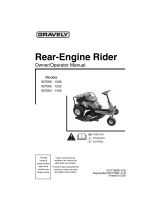 Gravely 927060-1028 User manual
Gravely 927060-1028 User manual
-
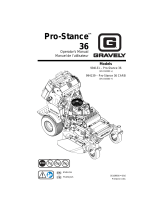 Gravely pro-stance 36 carb 994139 User manual
Gravely pro-stance 36 carb 994139 User manual
-
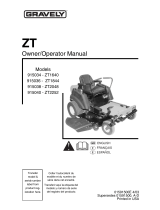 Gravely 915034 - ZT1640 Owner's/Operator's Manual
Gravely 915034 - ZT1640 Owner's/Operator's Manual
-
Gravely Promaster 320 Owner's/Operator's Manual
-
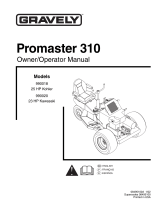 Gravely Promaster 310 User manual
Gravely Promaster 310 User manual
-
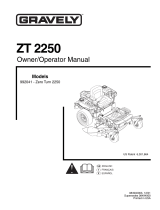 Gravely ZT 2250 Owner's And Operator's Manual
Gravely ZT 2250 Owner's And Operator's Manual
-
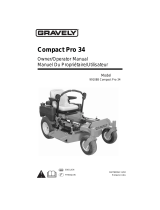 Gravely 99108 Compact Pro 34 User manual
Gravely 99108 Compact Pro 34 User manual
-
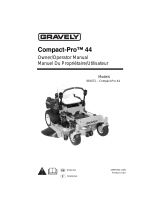 Gravely Compact-Pro 44 Specification
Gravely Compact-Pro 44 Specification
-
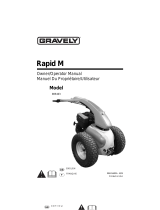 Gravely Rapid M 985403 Owner's/Operator's Manual
Gravely Rapid M 985403 Owner's/Operator's Manual















































